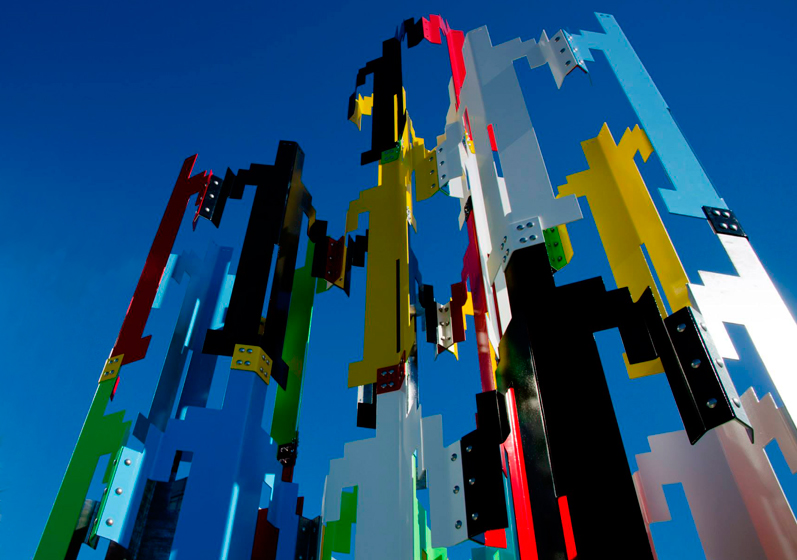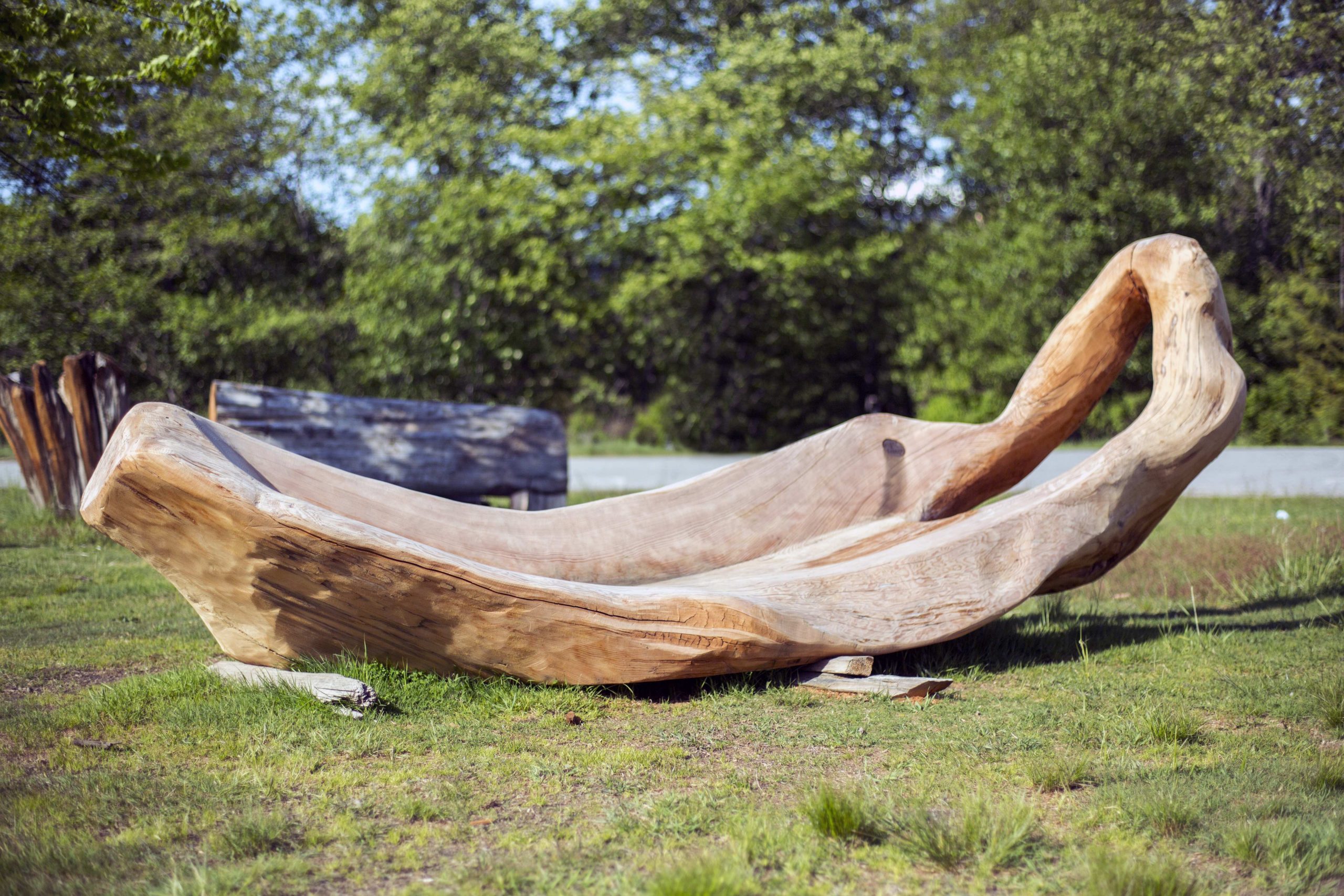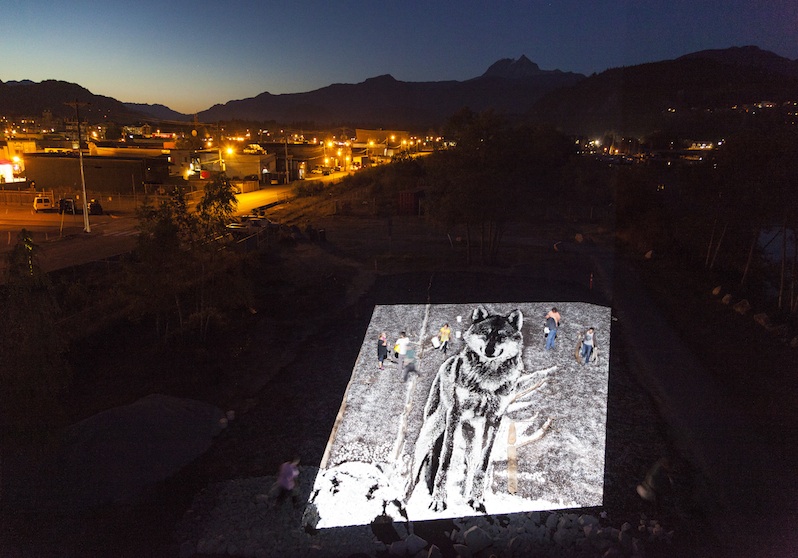Surrey Schools Drama Projects
Arts Education, Language Arts, Science, Social Studies
School: 4 Surrey Schools
Artist Collaborators: Julie Lynn Mortensen
Class: Grade 2 - 7
Overview
Through a partnership since 2014, selected Surrey schools had participate in the Vancouver Biennale annual BIG IDEAS program through a district wide interdisciplinary learning initiative expressed in various artistic media. Due to limited funding this year, only four Surrey Schools were selected to participate in the BIG IDEAS program.
Each school explores an unique BIG IDEA and explored the Biennale artwork through video and stills online as a springboard for a cross curricular project. The students and teachers continued their investigation of the BIG IDEA through drama and produced a final presentation of their ideas, thoughts, concerns, solutions and suggestions.
Teachers, Schools, BIG IDEAS and Connection to the Vancouver Biennale Exhibition
- Cecile Kibbe with L’ecole Riverdale Elementary Grade 2/3
BIG IDEA: Interaction and inter-dependency of various organisms in an ecosystem. The Biennale inspiration is Water #10 in Richmond. - Kristen Haggard and Janice Churchill with Grade 6/7
BIG IDEA: How are children’s rights being denied in the world and what can we do about it? The Biennale inspiration is Human Structures Vancouver - Tammy Anderson with Forsyth Elementary Grade 6/7
BIG IDEA: Indigenous Cultures of Canada and their connectedness to nature inspired by the Biennale artwork, Public Furniture | Urban Trees - Susan Sikic with Bear Creek Elementary Grade 3
BIG IDEA: Diversity & Cultural Traditions inspired by Biennale artwork Untitled/Wolf by Vik Muniz
A cross-curricular learning project integrating Arts Education, Social Studies and Language Arts and the students are challenged to explore how Indigenous Peoples from around the world share similar experiences, and that creating artworks connects us together and explore artworks and inquire how different artworks can express both individuality and the diversity in a community.
Creative Learning through Drama
WORKSHOP #1 – BODY
Introduction about Vancouver Biennale
How do artists bring big ideas to life? Talk about visual artists & the Biennale sculptures.
Segway into drama and how actors tell stories by becoming characters.
The actor’s instrument: BODY, VOICE & IMAGINATION
Body Warm-up exercises.
1. How do we sit in chairs. How would you sit in a chair if you were trying to impress the teacher, if you were an angsty teenager, if you were your dad?
2. How we walk. Walking through the space as if:
a. External effects – weather – cold, hot, snowy, rainy, icy etc
b. Internal effects – emotions – happy, sad, proud, shy etc.
3. Guessing Game – split into 4 groups and each group is given two cards. One card has an emotional state (ie. angry) and the other card has a character description (ie. pirates). The group has to use only their bodies (no sound) to become angry pirates and the other groups guess.
4. Gesture Circle – one person makes a gesture and the whole circle repeats it, and it goes around the circle like a wave.
BIG IDEA (Project Theme)
1. Big talk about theme for each classroom and how we can bring those themes to life with stories.
a. Ecosystem – can we tell a story about overcoming challenges? Or about nature?
b. Children’s Rights- what are some existing stories that tell these? Ie. Annie, Snow White. How can we adapt them and make them our own?
c. Indigenous Cultures- how can we bring Canadian history to life. Telling stories from before European arrival, during initial arrival and afterwards
d. Diversity & Cultural Traditions- bringing stories about different cultural holidays to life.
2. Split into groups of 4 and create one-minute mime stories inspired by the theme discussed. Key points: Face audience, go slowly, go big!
WORKSHOP #2 – VOICE
Voice Warm-up exercises.
1. Full vocal warm up. Exploring resonators, stretching out tongue, jaw, and face.
2. Breathing. How to release on the exhale instead of just blowing their air out. Most kids shared that this way of breathing made them feel relaxed.
3. Walla (which is verbal reactions that a character might make such as falling, getting a soccer ball to the stomach, or eating food). We also played with how we might explore a characters voice by getting it in our body.
4. A verbal version of the card guessing game. Each group was given a character and a reaction, the other kids had to close their eyes and guess the action and character just by listening.
5. Sound & Gesture Circle. One person does a sound & action and the rest repeat, going around the circle.
Workshop Performance:
YOUNGER GRADES – For the younger grades, we went around the circle and saying “This is my voice. I love my voice because___.” They could use their own voice, or a characters voice.
OLDER GRADES
This is my voice
This is my voice when I whisper
This is my voice when_____ (up to them)
This is my voice when I want to be heard.
I love my voice because____.
Again, they could choose a character, or they could do it in their own voice. And then if there was still time, we did a quick sharing of experiences during the workshop.
WORKSHOP #3 – IMAGINATION
Warm-Up & Focus Exercises:
1. Sound & Gesture. Going around the circle, one person makes a Sound & Gesture, the others mirror him/her. Then it moves to the next person in the circle…
2. Dude- a great focus game. All the kids look down. When leader says “LOOK UP” they look up directly into the eyes of someone else in the circle. If that person is looking away, they are safe. If that person chose them too and their eyes meet, they say “DUDE!” and are out. Honour for the best “DUDE” and for last standing.
Improv Warm-up:
1. What are you doing? Group stands in circle. One person is inside doing an action. The next person asks “What are you doing?” The person inside then says an action they are not doing (ie. I am flying an airplane). The asker goes into the circle to act out flying an airplane. The next person asks, “What are you doing?”. The person inside then says an action they are not doing… etc.
Improv Finale:
1. Title Bucket. Every student writes a title on a piece of a paper related to the theme. It has to be suggestive of a great story. Ie. The day the sun didn’t rise. Two actors go up onstage and are given the title & 10 seconds to come up with a storyline. They improvise the scene for the audience. Goal – to incorporate elements of story – beginning, middle & end // conflict & resolution!
Final Performance Prep:
In groups of 4-5. The last chunk of the workshop was dedicated to using their imagination to come up with a story that they would write into a full 2-5 minute script, related to their theme. They were told they would write this script to perform themselves but in reality, they would be asked to switch with another group next workshop!
WORKSHOP #4 – SCRIPT INTERPRETATION
Body/Voice Warm-up:
1. Sound & Gesture – this time using a line (ie. How could you do that?) and everyone in the circle has to find their own unique way of saying it. One person says it, the circle mimics, then it moves to the next person. Finding different emotions & levels, angry, sad, loving, nonchalant etc.
Ensemble / Working Together Games:
1. Collective Stop. Walking through space. Stop collectively. No indication, no leaders, just everybody putting their full connected attention on the group, becoming a part of a whole, just like they have to in a show. This take times to master. Extension: Once collectively stopped, one person will begin to walk, stop. Then two different people will walk, stop collectively. Then three, etc. ** Amazing focus, and group connecting game. Really builds over time!
2. Tableaux. In groups of 4 work together to create objects/animals/scenes with bodies. Ten second time limit and “leader” honours groups that best work together. IDEAS: Coffee cup, Dragon, Piece of Pizza, Scene from Frozen, Summer Vacation, Worst Christmas Ever.
Prop Imagination Game:
1. This is not a…Pass an object around the circle. “This is not a (chalkboard eraser), this is a (skateboard). Act out new object. Encourage them to find objects to use as other things in their final productions.
Reflection
Artist – Julie Lynn Mortensen
The final performance was different for every group based on where they were at:
For one group who were able to get their scripts solidly down in writing, we exchanged scripts between groups. Actors got to interpret a writer’s words, and writers got to see their work come to life in new ways. Another group continued to develop and bring their own scripts to life. Both older groups brought the themes to life so well! One younger group created story outlines and used improv to bring their stories to life. Their imaginations took them pretty far from theme but into a really imaginative fun place!
The French Immersion young group was given a script outline to follow to see how many different ways they could bring the same words to life. The outline was:
A. Hey! Look what I found!
B. Whoa! It’s a __________
C. Let’s ________________
D. Uh oh. It’s ____________
In all performances we were looking for:
CHARACTER DEVELOPMENT
~ How do they walk?
~ How do they talk?
~ What do they want? (older groups)
PERFORMANCE SKILLS
~ Staying Focused
~ Working Together
FOR YOUNG ACTORS WHO WANT TO DO MORE!…
There was so much talent in your classes and many of your students came up to me afterwards asking how they can become actors one day. Here are some steps they can take now:
1. Audition for every school play they can.
2. Take more classes!
a. Located in South Surrey thedramaclass.com
b. Carousel Theatre in Vancouver.
c. Gateway Academy in Richmond
d. Vancouver Young Actors School & Biz Studio in Vancouver – both the best for on-camera, highly professional training that could start a young career in the industry.
3. Submit to agencies! There are so many agencies in Vancouver and a good agent will guide a young career and get them out on the big screen. The parents have to be on board because they will need to help them learn lines and drive them to auditions.
There are some specific to children:
a. Kool Kids Talent
b. Reel Kids Talent
c. Tiny Talent
And others who have both child & adult rosters:
a. Trisko Talent
b. Premiere Talent
c. And there are more. A great resource is: https://www.vancouveractorsguide.com/resources/agents
Credits
This project is generously supported by City of Surrey.



